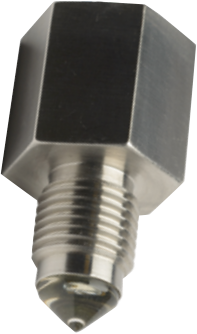

Optical Level Switch Manufacturer
Optical Level Switches are advanced liquid detection sensors that operate using infrared light reflection technology for high-precision level sensing. Each unit integrates an infrared LED and a light transistor behind a prism tip—when exposed to air, the light reflects internally and returns to the transistor, while immersion in liquid causes refraction, reducing the returned signal. This principle allows highly accurate point-level detection for water, oil, and chemical applications. As a leading Optical Level Switch Manufacturer and Supplier in Ahmedabad, Aranka Instruments LLP delivers compact, durable, and maintenance-free designs perfectly suited for industrial automation, HVAC, and water-treatment systems.
Advantages and Disadvantages of Optical Level Sensors
The main advantages of optical level sensors are their compact size, their lack of moving parts, and their low cost. However, while extremely accurate for point level detection in high-stress environments, they’re less useful for continuous level measurement. In addition, optical level switches are unsuited for applications where top mounting is necessary; when top-mounted, the accuracy optical level sensors may be adversely affected by moisture condensation.
- Simple, little, and sturdy
- Nothing that moves.
- Solid-state electronics that are built in.
- Simple to uninstall, clean, and reinstall.
- LED switch signaling.
| Power | 24VDC | |
| Body MOC | S.S 304, S.S. 316, Nylon, PTFE | |
| Connection | 3/4″ BSP Male | |
| Cable Length | 1 meter | |
| Output | Transistor | |
| Operating Temperature | 0 ~ 120’C | |
| Operating Pressure | 10 Bar | |
As per Application
Coming Soon
Coming Soon
Frequently Asked Questions (FAQs)
What is an Optical Level Switch?
An Optical Level Switch is a point-level sensing device that uses infrared light to detect the presence or absence of liquid at a specific level in a tank or pipe.
How does it work?
It emits infrared light through a prism tip. When in air, light reflects back to the sensor; when liquid surrounds the tip, the light refracts, reducing reflection — this change triggers an output signal.
What are its key advantages?
Compact design, no moving parts, fast response, low maintenance, and reliable performance in clean liquids.
Where can it be used?
Ideal for water, oil, and chemical level detection in industries like automation, HVAC, and water treatment.
What materials are available?
Aranka Instruments offers models in SS304, SS316, Nylon, and PTFE with standard ¾″ BSP male connection.
What power supply does it require?
Operates typically on 24 V DC supply with transistor output.
Can it be customized?
Yes, customization options include body material, mounting style, and cable length as per application.
What is its temperature and pressure range?
Designed to operate up to 120 °C and withstand pressure up to 10 bar.

